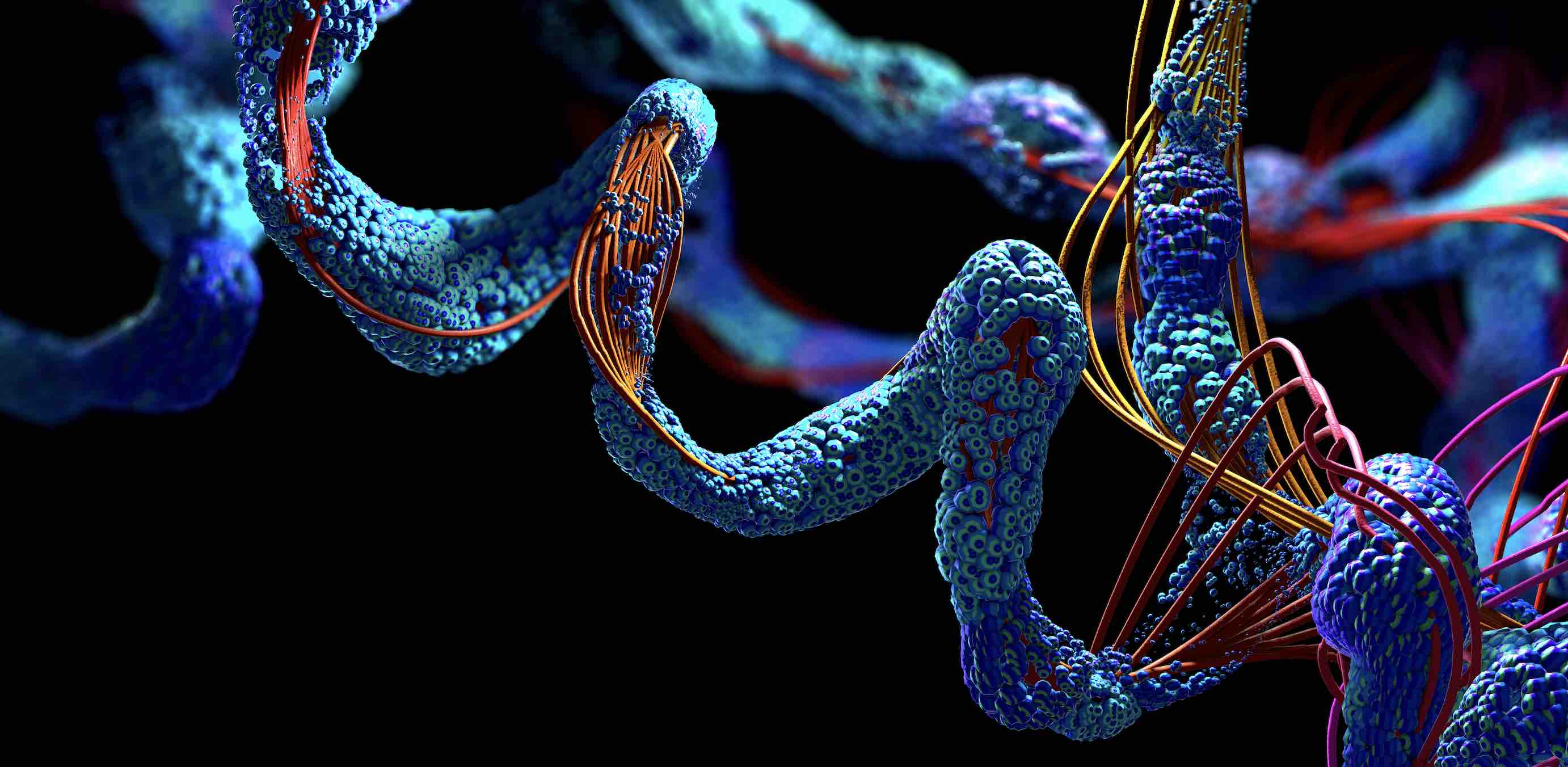The dietary supplement Suprefort is a complex of low-molecular peptides with molecular weight up to 5000 Da, isolated from pancreas of young animals - calves aged up to 12 months. Isolated peptides possess tissue-specific action to pancreas cell tissue, thus restoring metabolism and normalizing its functional activity.
Suprefort is manufactured in the form of capsules, containing 10 mg of active peptides. Suprefort was administered per os 10-15 minutes before meal 1-2 capsules 2 times a day for 10-20 days depending on severity of the pathological process.
The clinical studies of Suprefort were carried out at the Medical Center of the Saint Petersburg Institute of Bioregulation and Gerontology in patients with Chronic pancreatitis in the state of remission and in patients with Diabetes mellitus II during the period from November 2005 till January 2006.
Deregulation of physiological functions and pathological changes in pancreas result in diseases with signs of nutrition and metabolism disorders. Consequences of progressive inflammatory process in pancreas are, as a rule, dystrophic processes accompanied with disorders of excretion of digestive pancreatic enzymes, characteristic for chronic pancreatitis. In the presence of disorders of insulin secretion, the patient has symptoms of ‘secondary’ diabetes mellitus.
Diabetes mellitus is one of most widespread endocrine diseases: about 1-2% of Earth’s population has it. Besides there are same amount of people with occult diabetes and genetically predisposed to this disease. The diabetes signs in any single case are integrated reaction to mutual action of multiple factors with various combinations (genetic predisposition, chemical and infectious agents of environment, autoimmune processes, nutrition, physical activity, psychological stresses etc.). Detection of new syndromes (diabetes, caused by formation of antibodies to insulin receptors; diabetes caused by genetic defects of insulin structure etc.) is a reason of constant necessity of addition of disease classification. Potential, latent and asymptomatic forms of the diseases without clinical symptoms require special attention concerning prognosis, prophylaxis and treatment (1, 3, 6, 7, 8). Treatment of chronic pancreatitis is based mainly on diet and enzyme preparations (pancreatin, pansinorm) etc. (5) Treatment of diabetes mellitus without clinical signs requires diet therapy and phytotherapy (2, 4).
Clinical characteristic of the patients
Distribution of the patients by diagnoses, sex and age is shown in the table 1. Treatment using Suprefort was carried out in 34 patients (18 male and 16 female) with diagnoses ‘Chronic pancreatitis, latent form’ (12 persons) and ‘Diabetes mellitus II type, latent form’ (22 persons). The patients with chronic pancreatitis were complaining of the loss of appetite, eructation, meteorism, borborygmus, stool disorders. Two groups of patients were formed using random sampling technique, in these groups the patients have similar sex, age and diagnosis: the basic group included 12 patients (8 men, 4 women), control group - 8 patients (4 men, 4 women).
Table 1
Distribution of the patients by diagnosis, sex and age

The patients of the control group have been taking general purpose medicines. The patients of the main group have been taking Suprefort in addition to the general purpose medicines - 1-2 capsules, 2 times a day before meal for 15 days.
Diabetes mellitus II in the patients was not accompanied by any clinical signs and was diagnosed on the basis of an increase in glucose level in peripheral blood in view of unbalanced diet.
Control group included 17 patients, who have been taking general purpose medicines. 22 patients of the main group have also been taking Suprefort in addition to the general purpose medicines - 1 capsule, 2 times a day before meal for 15 days.
Examination methods
The patient complaints were assessed and compared, general clinical studies of blood and urine were carried out together with blood biochemical test using ‘REFLOTRON’ device, (Boehringer Mannheim, Germany). Duodenal content was examined. Glucose tolerance test was carries out.
Examination results
It was established that administration of Suprefort in patients with chronic pancreatitis resulted in increase in appetite and decrease in the rate of dyspepsia.
Table 2
Suprefort influence of activity of digestive enzymes in patients with chronic pancreatitis

Laboratory assessment of duodenal content has shown initial decrease in activity of pancreatic enzymes (table 2). After Suprefort administration there is tendency toward increase in activity of pancreatic enzymes, which correlated with improved clinical symptoms.
Suprefort in patients with diabetes mellitus II was administered in parallel with glucose tolerance test. It was established that after glucose challenge the patients had characteristic glycemic curve. The patients of the main group have also been taking Suprefort in addition to the general purpose medicines - 1 capsule, 2 times a day before meal for 10 days. It was shown, that after Suprefort administration the test carried out in 2 hours after beginning of the study showed gradual decrease in the glucose level. In 5-10 days after beginning of the treatment course the patients had normal glucose levels. None of the patients had increased dosage of blood glucose lowering drugs, 12 patients (54,5%) were using decreased levels of general purpose medicines and in 7 patients (31,8%) the blood glucose level was below normal values without blood glucose lowering drugs. In 3 patients (13,6%) the parameters remained at the initial level. It is worth noting the stabilization of the blood glucose parameter in the patients of the main group within next 2-3 month after the end of treatment (table 3).
Table 3
Suprefort influence on blood glucose values after glucose loading in patients with diabetes mellitus II

In patients of the control group, who have been taking general purpose blood glucose lowering drugs, it was not possible to lower the dosage of the medicines, and in 9 patients (52,9%) the dosage of blood glucose lowering drugs was increased with a purpose of normalization of content of blood glucose.
Thus the results of the clinical study obtained confirm an efficiency of Suprefort and expediency of its use in complex treatment of the patients with chronic pancreatitis and diabetes mellitus II.
Suprefort does not result in side effects, complications and drug dependence. Suprefort is convenient for administration in hospital, out-patient conditions and at home. Suprefort can be used as medical and preventive mean in the form of biological active food additive and in the form of adjunct in combination with any means of symptomatic and pathogenetic therapy, used for treatment of patients with chronic pancreatitis and other diabetes mellitus II.
Conclusion
The dietary supplement Suprefort normalizes functional activity of pancreas cells.
Suprefort is well tolerated by patients at oral administration; it does not result in any side effects and can be widely used as a treatment and prophylactic biologically active food additive for complex treatment of pancreatic function disorders.
Recommended Suprefort dosage
In patients with chronic pancreatitis - per os 10-15 minutes before meal 1-2 capsules, 2 times a day for 15 days.
In patients with diabetes mellitus - per os 10-15 minutes before meal 1 capsule, 2 times a day for 15 days in parallel with blood glucose monitoring.
It is expedient to carry out another treatment course in 3-6 month if needed.
References
1.Balabolkin M.I. Diabetes mellitus / Endocrine disorders // Diagnostics and treatment of internal diseases: Manual for doctors. - Edited by F.I.Komarova. - M.: Medicine, 1991. - V. 2. - pages 465-492.
2. Belousov Y.B., Moiseev V.S., Lepakhin V.K. Clinical pharmacology and pharmacotherapy: Manual for doctors. - M.: Universum, 1993. - 398 pages
3. Internal diseases / Edited by A.S. Smetnev, V.G. Kukes. - M.: Medicine, 1982. - 496 pages
4. Yordanov D., Nikolov P., Boychinov Asp. Phytotherapy. - Sofia: Medicine and physical culture, 1972. - 346 pages
5. Mashkovsky M.D. Medicines: Pharmacotherapy for doctors, manual: 2 parts. - Vilnius: ZAO “Gamta”, 1993.
6. Geriatry manual / Edited by D.F. Chebotarev, N.B. Mankovsky. - M.: Medicine, 1982. - 544 pages
7. Teppermen G., Teppermen H. Physiology of metabolism and endocrine system: Translated from English. - M.: Mir, 1989. - 656 pages
8. Ugolev A.M., Radbil O.S. Digestive system hormones. - M.: Nauka, 1995. - 283 pagesDiabetes mellitusDiabetes mellitusDiabetes mellitusDiabetes mellitusDiabetes_mellitusDiabetes_mellitus





